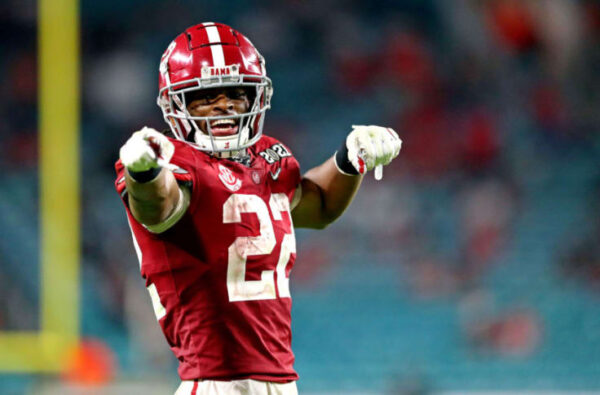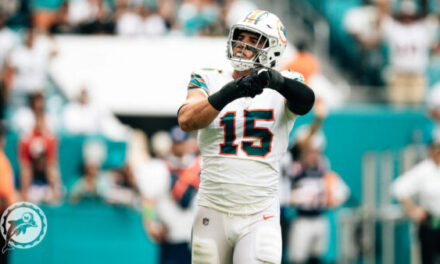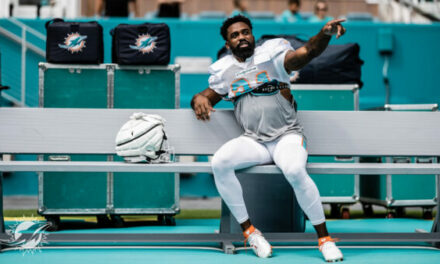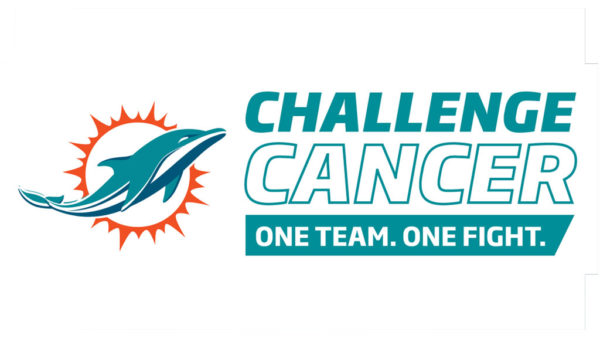

At the time of writing this, the Dolphins have yet to sign a significant free agent. The team is rumored to be interested in some players, but they’ve yet to pull the trigger on someone big so far. Part of the reason might be because one of the team’s target players decided to resign with their old team.
Miami was heavily rumored to be zeroing in on Packers running back Aaron Jones as a free agent before he signed a new deal keeping him in Green Bay. There is still a chance Miami signs a running back in free agency, but given the available options, it’s unlikely that player— someone like Malcolm Brown, for instance— will be the long-term answer at the position.
If you follow me on Twitter, you know I’m a huge proponent of the “running backs don’t matter” mantra. Put: running backs should not be given long-term contracts for premium money, nor should teams select running backs with premium draft picks because the return on investment is almost always poor, and running the ball is statistically inefficient compared to throwing the ball.
I could write an entire article about it, but nobody wants to read that. With all of that said, it seems clear the Dolphins are committed to finding a better running back — or two — which, in theory, I’m in complete support of.
Let’s see what the draft has to offer the Dolphins at the running back position. As usual, I’ll breakdown by draft rounds.
First Round:
Najee Harris, Alabama
Najee Harris is a grown man. Runs through tackle and then jumps over one. pic.twitter.com/u0ZWme1yhE
— Dante Collinelli (@DanteCollinelli) January 21, 2021
I have a hard time seeing the NFL letting former Alabama running back Najee Harris fall past pick 32 in April. He’s a big name, from a big school, and his tape is also quite good. This means Miami would either take Harris at pick 18 — this would cause me to have a real meltdown on whatever live show I’m doing — or they trade back into the first round to select him.
Harris is my RB1 in this class and really is a great prospect. His vision and pass-catching have both improved steadily over the years, with the Crimson Tide making him one of the draft’s only three down-backs. He’s built like Derrick Henry but is significantly quicker and more agile between the tackles while lacking Henrey’s trademark stiff arm.
Harris’s burst in short areas plus long strides allow him to create chunk runs despite having only modest long speed, at best. Harris showed off some pretty good receiving skills, which makes him an option for a modern NFL offense.
Not to mention, he already has chemistry with Tua Tagovailoa. I prefer Miami doesn’t select Harris in the first round, but if he’s their guy, then they will probably have to.
Second Round:
Javonte Williams, North Carolina
I’m sold. pic.twitter.com/7LYtK1Jfhs
— Dante Collinelli (@DanteCollinelli) January 7, 2021
The best way to describe Javonte Williams is the old scouting trope: “playing against him is like being in a 60-minute car crash.” Williams is easily the most physical running back this draft class has to offer. He’s got absolutely no issues running over defenders in the open field and bouncing off of tackles in close quarters to pick up extra yards.
What made Williams’ film so impressive was how consistent his vision was. He’s good at setting up second-level defenders and following his blocks while remaining patient for them to set up and pave wide-open lanes for him.
Like Harris, Williams doesn’t have a ton of long speed and instead relies on his initial burst to break angles and create chunk plays. I don’t think Williams is slow, by any means, but he’s probably not going to be a true homerun hitter in the NFL.
The last important thing to highlight with Williams is his willingness to pass block on third downs. His technique needs some work — specifically his hand placement —, but he’s willing to lay out blitzing defenders and is incredibly stout for an RB.
Williams is my RB2 in this class and ranked one spot below Najee Harris on my overall board.
Travis Etienne, Clemson
Travis Etienne is quite good too. This RB class is bonkers. https://t.co/f4miQbcSN1
— Dante Collinelli (@DanteCollinelli) November 2, 2019
It feels like Etienne has been on NFL Draft radars forever now. He broke onto the scene his freshman season and then broke a ton of ACC rushing records on his way to one of the most impressive collegiate careers in this class.
Etienne’s calling card is speed, which separates him from players like Javonte Williams and Najee Harris. Etienne’s burst is easily the best in the class, allowing him to break tackle angles at the second and third levels with relative ease.
While he’s always been fast and a true homerun threat, early in his career, Etienne struggled with catching the ball and his contact balance. However, Etienne has seen improvement in both those areas over his career with the Tigers. He filled out his lower body frame allowing him to withstand contact better, and his catch technique looks much more comfortable as an upperclassman than it looked when he was an underclassman.
Etienne’s 2020 season was a little underwhelming, meaning there’s a chance Miami could snag him at pick 36 or pick 50.
Michael Carter, North Carolina
So it turns out Michael Carter is also pretty good. pic.twitter.com/tzJNHwDzT3
— Dante Collinelli (@DanteCollinelli) January 7, 2021
Carter is the second half of North Carolina’s two-headed monster from last season. Carter was, essentially, the perfect complement to Javonte Williamsvas, a smaller back who wins with quickness and shiftiness in the open field while offering more in the passing game.
He excels at making people miss in the open field and can really explode into the second level if given a clear hole. He’s not going to run anyone over, and his contact balance is modest at best. Where Carter does separate himself is his pass-catching ability.
Carter is a smooth route runner with a ton of experience working swings, screens, and angle routes out of the backfield. He looks super comfortable catching the ball and will undoubtedly provide an NFL team with a mismatch weapon.
Miami’s screen game was super underwhelming last season and something they really need to improve going forward. Carter should be on the board at pick 50 and might even be on the board in round three, depending on when other RBs are drafted.
Honorable Mention: Trey Sermon, Ohio State
Day Three:
Jaret Patterson, Buffalo
Buffalo RB Jaret Patterson is too much fun. His lateral agility allows for a lot of plays like this one. pic.twitter.com/PWquVvqibc
— Dante Collinelli (@DanteCollinelli) February 5, 2021
Patterson is one of my personal favorite running backs in the 2021 class. He’s not going to be for everyone, but I think he can be a valuable part of a team looking to build a well-rounded committee of diverse skillsets in the backfield.
His contact balance, lateral agility, and quickness allow him to consistently make players miss at all three levels of the field while also picking up extra yards through contact. He’s very experienced running zone concepts and displays good vision and patience behind the line.
Patterson does have some gaps in his game, which is why he’s firmly a day three player. For one, he’s pretty small, which he knows how to use to his advantage, but he might not meet size thresholds for some teams. Secondly, he’s not someone I would describe as fast. He produced many big plays at Buffalo, but he was out running some lowly competition on those reps.
Overall, I think Patterson could really help the Dolphins have a more consistent rushing attack if paired with a veteran player they sign in free agency, like Malcolm Brown, for instance.
Javian Hawkins, Louisville
Louisville RB Javian Hawkins has some really impressive plays on his film. He’s incredibly explosive and pretty elusive too. pic.twitter.com/qrDCVEEZc0
— Dante Collinelli (@DanteCollinelli) February 10, 2021
Hawkins provides almost the direct opposite skillset as Patterson. Hawkins’ whole game is built on his speed and burst, which allowed him to produce consistent big plays for the Cardinals the past two seasons. Hawkins is also a dynamic threat in the open field, capable of spinning away from defenders and juking them out of their shoes.
There were some pretty good examples of Hawkins making an impact in the passing game too. He ran wheels, screens, and flares pretty consistently in 2020 while making some pretty nice catches on poorly thrown passes. He made a great adjustment on a wheel route against Notre Dame roughly 30 yards down the field. Suffice to say; he would be the Dolphins’ best receiving back from day-one.
Where Hawkins struggles is with contact balance and power. He doesn’t deal with contact well and isn’t going to break a ton of tackles. This means if things aren’t blocked up well for him, he might go down a little easier than someone like Patterson or Williams.
Hawkins would be the perfect complement to a power-based back, like Malcolm Brown, for instance. He provides the juice and pass-catching ability those players often don’t have.
Honorable Mention: Jermar Jefferson, Oregon State













